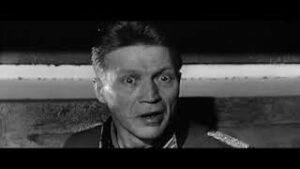The false legends of D-Day – Normandy Landing
Myths and legends of the Normandy landings
One of the false legends of D-Day: the Germans only discovering the Allied armada at dawn on 6 June 1944. Actor Hans Christian Blech, alias Werner Pluskat, in the film The Longest Day.
Image: 20th Century Fox
The famous D-Day of 6 June 1944 has a number of legends and myths, like all great historic events. But some of these legends are more enduring than others. Generally speaking, the most common are fuelled by feature films such as The Longest Day, where certain cinematographic liberties or script approximations have taken the place of historical reality.
This section brings together the various false legends of D-Day that relate, directly or indirectly, to the Normandy landings. Its aim is to help dispel these myths in order to re-establish historical reality.
Unfortunately, press articles regularly help to propagate these false legends (above all because of a lack of in-depth study of the subjects), while certain museums (including those in Normandy) play an ongoing role.
The investigations I have provided below, which are well argued and documented, will help you to see things more clearly and form your own opinion.
- Was the Allied armada discovered by Major Pluskat at daybreak?
- On which side of the Sainte-Mère-Eglise bell tower did American parachutist John Steele hang?
- Which commune was the first to be liberated on 6 June 1944?
- Did all the American paratroopers used the famous cricket to identify themselves at night?
- Did Operation Neptune correspond exclusively to the crossing of the English Channel by the Allies?
One of the false legends of Omaha Beach concerns the absence of amphibious tanks on the beach on D-Day. In reality, several dozen of these tanks may have been deployed.
Photo: US National Archives


